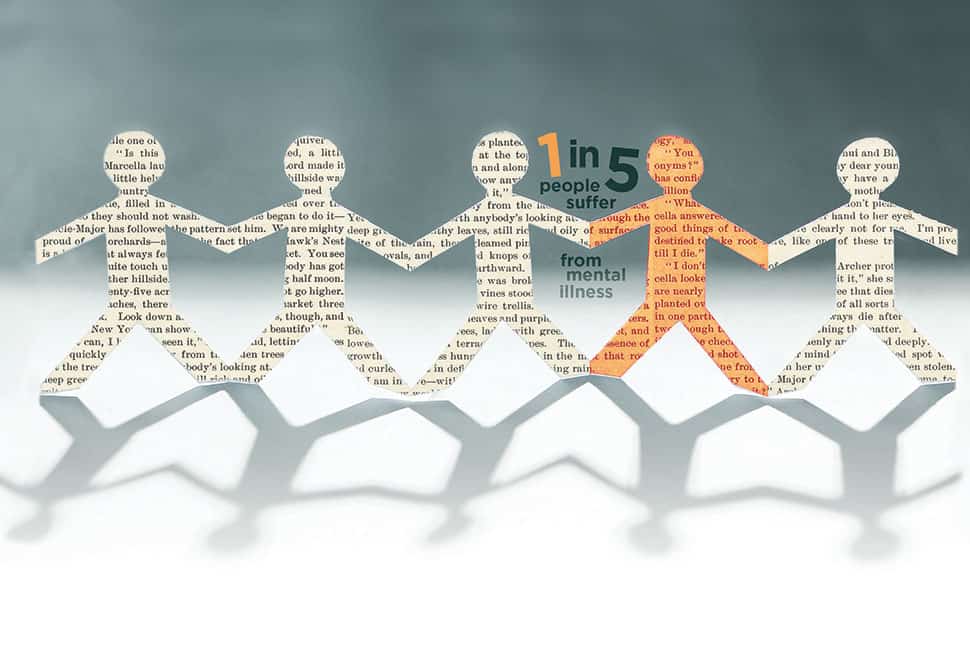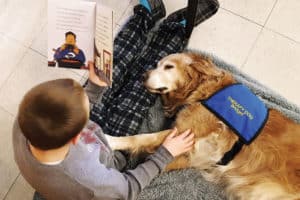
One in five Americans has a mental illness, according to the National Council for Behavioral Health, and getting help can be difficult because of the stigmas and lack of understanding associated with mental health.
Though many library staffers receive physical first aid and CPR training as part of their jobs, mental health first aid training happens far less often. For libraries, however, mental health training can defuse tense situations, provide needed resources, and most importantly, help patrons through crises.
Such training is meant “to raise awareness and break down stigmas, and make mental health first aid as common as physical first aid,” says Joseph Miesner, access services librarian at San Diego Public Library (SDPL), who has received mental health training as well as the certification needed to teach it himself. Through trainers like Miesner, SDPL plans to administer the training to staff at more than
30 branches.
Mental health training is offered through various providers, including Mental Health First Aid USA, operated by the National Council for Behavioral Health. Participants learn to identify different types of mental illnesses and substance abuse, and they also receive a five-step action plan. The plan teaches trainees who encounter an individual with signs of mental illness to: assess for risk of suicide or harm to self or others, listen nonjudgmentally, give reassurance and information, encourage the person to seek appropriate professional help, and encourage self-help and other support strategies. “Like CPR, it gives you some tools to help until the crisis is resolved or until the person can get to help,” Miesner says. He emphasizes that the training does not make him an expert, nor does it perform miracles.
While mental health first aid may not work miracles, it can deescalate library disruptions. The main library of Jackson-Madison County (Tenn.) Library is located several blocks from organizations that serve people with nowhere to go, such as soup kitchens and shelters, and because of that, the library attracts patrons who may be dealing with mental health issues. “I’m here for the people, and I want more people to use the library, not fewer. I want to make it easier for people to use the library. I don’t want to ban people,” says Director Dinah Harris.
When Harris first started at the library, she sat down with some of the more disruptive patrons to let them know that while she cared about them, she “needed them to respect the library as a library.” Many of those patrons responded well, but a small group still struggled. That’s when Harris realized she and her staff needed mental health training. “One of the biggest things the training did for us is that it taught us to be more relaxed, more patient, not as uptight,” she says.
According to Jackson-Madison’s Adult Services Librarian Jenci Spradlin, the training has taken away the fear. “There are things that we can do to help people who may be experiencing some type of mental health issues when they’re in here. Now we don’t feel so helpless in those situations, and we have some tools,” she says. Additionally, the training has helped both Harris and Spradlin to be more aware and understanding of all their patrons, and even their coworkers. “You think about the kind of people that might be talking to themselves or acting out in a large way, but it’s not just that—it’s people with depression, anxiety, and a spectrum of issues,” says Spradlin.
Mental health and youth services
At Wilton (N.H.) Public and Gregg Free Library, Youth Services Librarian Stephanie Loiselle believes that understanding mental health is essential to her work. “When you’re involved with youth, you really want to know: How can I do more, what could I have done to help a person who didn’t get the help they needed, to stem that tide?” she says.
The training has changed how she interacts with her young patrons. “I take more time to engage one-on-one,” she says. She’s also learned to ask questions that other people might not, such as “How was your day, how was school, how are you feeling today—and asking that question in as many different ways as possible to as many kids as possible.” During the training, Loiselle says she was also deeply affected by a video of a young man who tried to commit suicide. Before making the attempt, the young man rode the bus all day, waiting for someone to speak to him or smile at him. “Take that time to smile and engage with every person you meet; you could be the person getting them over that hump,” she says.
Loiselle also uses readers’ advisory to guide youth in the right direction. “There are so many books coming out right now that have kids with mental health issues who are surviving,” she says. She keeps her eye out for kids who would benefit from identifying with a fictional situation that mirrors their own. “Outside of teachers and parents, sometimes a librarian can be the adult they know and trust the most. Use that relationship to take care of the kids to whatever extent,” Loiselle says.
Ultimately, the library is perfectly positioned to offer resources to those seeking help with their mental health. Spradlin explains: “The library is a natural community gathering place, and it is designed to be a place where people from all walks of life can come to gather, to learn, to explore. And with that, you have to realize that you’re going to have a broad spectrum of patrons, socioeconomic and age-wise, but also health-wise, both physical health and mental health.”
Miesner echoes the same sentiments, highlighting the librarian’s role in connecting patrons to information. “We’re a great institution that invites everyone in. We’re also information professionals, in a unique position to help a large cross section of the community by using our skills and the things that are offered in [mental health training] to get people to the info they need and make a difference in people’s lives.”


